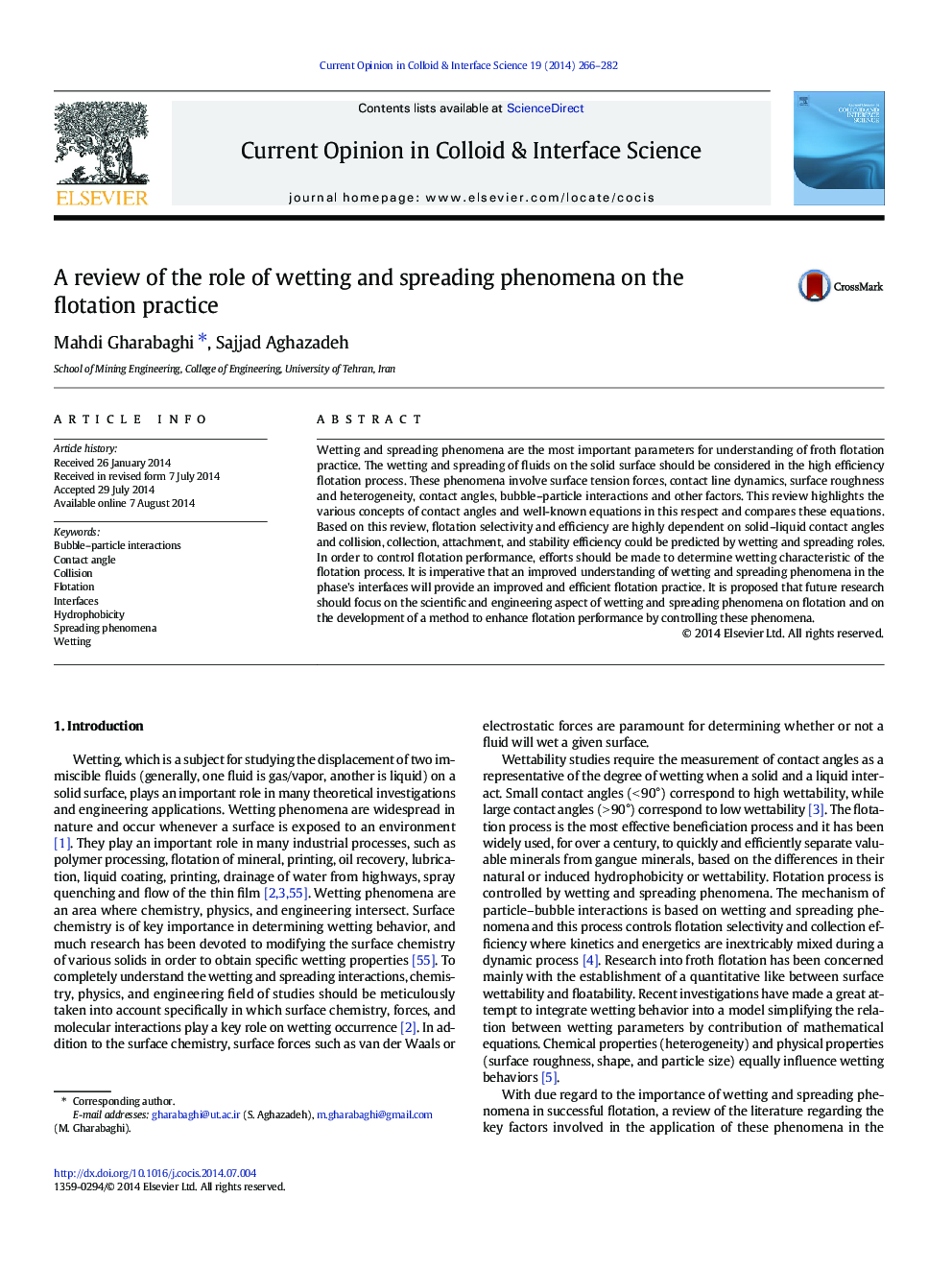| Article ID | Journal | Published Year | Pages | File Type |
|---|---|---|---|---|
| 603221 | Current Opinion in Colloid & Interface Science | 2014 | 17 Pages |
•Classification of various contact angles in flotation are identified and discussed.•Wetting and spreading effects on flotation performance are reviewed.•Key influencing factors on bubble and particle interaction are discussed in detail.•Future research needs on the understanding of froth flotation mechanism are discussed.
Wetting and spreading phenomena are the most important parameters for understanding of froth flotation practice. The wetting and spreading of fluids on the solid surface should be considered in the high efficiency flotation process. These phenomena involve surface tension forces, contact line dynamics, surface roughness and heterogeneity, contact angles, bubble–particle interactions and other factors. This review highlights the various concepts of contact angles and well-known equations in this respect and compares these equations. Based on this review, flotation selectivity and efficiency are highly dependent on solid–liquid contact angles and collision, collection, attachment, and stability efficiency could be predicted by wetting and spreading roles. In order to control flotation performance, efforts should be made to determine wetting characteristic of the flotation process. It is imperative that an improved understanding of wetting and spreading phenomena in the phase's interfaces will provide an improved and efficient flotation practice. It is proposed that future research should focus on the scientific and engineering aspect of wetting and spreading phenomena on flotation and on the development of a method to enhance flotation performance by controlling these phenomena.
Graphical abstractFigure optionsDownload full-size imageDownload high-quality image (155 K)Download as PowerPoint slide
